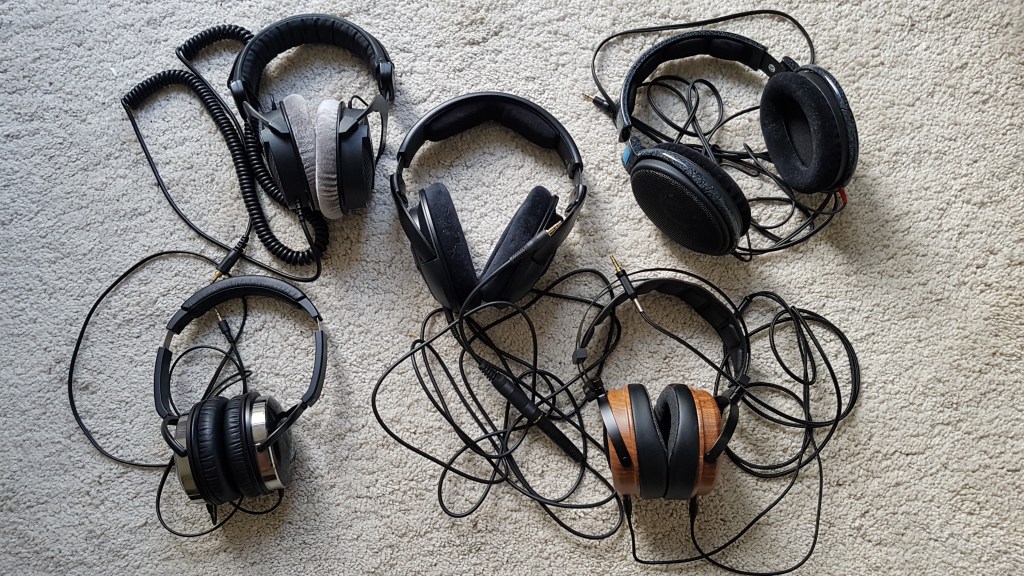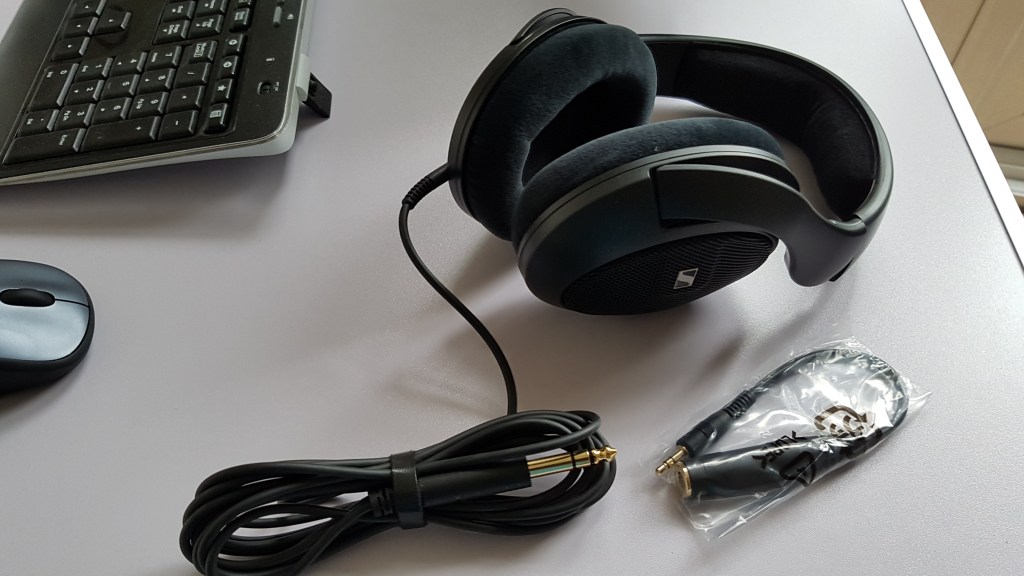
The Sennheiser HD560S is a £170 open-backed reference headphone raved about by the YouTube reviewer DMS as his new reference for flat sound. The Sivga Phoenix is a £250 open-backed (nominally at least) headphone raved about by the YouTube reviewer Zeos on ZReviews as one competing with headphones up to $1000!
Which is best? Well in a nutshell the Sivga Phoenix for me – however just as in an episode of the famous LA detective TV series Columbo read on to find out why and how I came to this conclusion!
Both sound wonderful and have no noteworthy issues with frequency response, clarity, colouration or 3d soundstage/imaging.

Starting with the Phoenix, the bass is well extended into sub bass and also has good impact or slam. Vocals are clear and natural and the highs are also well extended and detailed without either being too sibilant or masking or smoothing out sibilance where it is there in the source (so they don’t gloss over sibilance in recordings e.g. the line “give ourselves one more chance” in Queen/Bowie’s ‘Under Pressure’ or the high frequency chatter you hear from low fidelity sources like low bit rate DAB stations). The highs are not as highlighted and analytical as on the Beyerdynamic DT990 Pros however the latter are more tools for detecting and studying issues with recordings than for presenting a true to life, natural and musical picture.
The Phoenix is slightly easier to drive (2 notches less on my phone for the same volume) and has more impactful bass and a higher level of detail retrieval and naturalness/realism however the soundstage is narrower and more intimate and in your head than one would expect from an open back headphone (which are typically more speaker-like in that sounds appear to come from a distance). The lack of sound leakage and good level of bass impact makes me wonder whether despite the grille they are in fact closed back or perhaps semi-open. One cant see the drivers or daylight through the grille. Curiously they also smell of circuit board solder when fresh from the box though that is becoming less noticeable!
Practically they are very comfortable and well built, and can be driven from my old Samsung S7 phone to a good listening volume at 60% of maximum. They are not a heavy headphone but noticeably heavier than the HD560S. The cable is a replaceable Y with 2 x 2.5mm jacks at the headphone end, terminated in a 3.5mm jack plug that easily fits into the socket of a phone within a case (unlike that of the Sennheiser). They have good head size adjustment that stays put and an adequate cup size with a good seal however since fairly snug ears get warmer over extended listening than with larger and more ventilated cups. The cable is fine for portable use with a nice braided cloth outer though no inline controls to skip or pause tracks and no microphone. Isolation from external sounds is only fair however sound leaks out into your listening area far less than on the Sennheiser.
The Phoenix involves me and makes me want to continue listening to each of my well known test tracks in full rather than shuffle through them, which is a sign of a good set of headphones. Their lifelike natural and coherent sound reminds me of the Creative Aurvana Live (CAL) with their Fostex biocellulose drivers (also used in the famous Denon Dx000 headphones) however with much better controlled bass resonance/boominess and less treble roll off than on the CAL.

Moving on to the HD560S, bass is also well extended into sub bass and has good impact or slam but not as good as that from the Phoenix. Vocals are clear though less warm and rich and natural sounding than those from the Phoenix and the highs are also well extended and detailed without either being too sibilant or masking or smoothing out sibilance where it is there in the source. That said they aren’t giant or even ‘midfi’ killers in that vocals sound more head-turningly realistic and busy passages with lots going on (like Hans Zimmer’s Dark Knight soundtrack) sound less blurred and confused with each instrument and part better resolved on both the Phoenix and my reference Sennheiser HD600 (though the HD600 has less punchy and satisfying bass on some tracks, even with a dedicated transistor or tube amplifier). Non-audiophiles may not notice or only notice the difference in a side-by-side comparison, and even then not consider the difference worth the extra cost. Certainly the lesser realism does not significantly affect the emotional impact of music however those who perceive and appreciate the difference may find the extra realism worth it. The performance of the HD560S may improve with better amplification that can pull and push the drivers into shape more instantaneously however you will still be starting with a lower baseline than that provided by the Phoenix. The HD560S bass did improve somewhat when driven from my FiiO E11 transistor and Bravo Audio Ocean tube headphone amps (the latter has plenty of headroom and the volume knob makes it barely half way) however at medium listening volumes the difference was not night and day and it never approached the slam of the Phoenix.
Practically there are no issues for the form factor in that they are very comfortable and although light feel solid and well built. From my Samsung S7 phone, they need close to the maximum volume and the supplied 3.5mm jack plug cable adapter (which btw struggles to fit into the socket of a phone within a case unlike that of the Phoenix). They have good head size adjustment that stays put though the sheer cup size means that for small heads they will extend into the cheek/neck area and potentially compromise the seal and hence low frequency response. They have an unmanageably long cable for portable use with no inline controls to skip or pause tracks and no microphone however the cable is replaceable with a single 2.5mm jack at the headphone end though what looks to be a proprietary locking mechanism. As an open back, of course they have limited potential for outdoor or quiet area use since sound leaks in and out very noticeably.
In a nutshell, the Phoenix is slightly easier to drive (1-2 notches less on my phone for the same volume) than the HD560S and has more impactful bass and a higher level of detail retrieval and naturalness/realism however the soundstage is narrower and more intimate and in your head than one would expect from an open back headphone.
I prefer the naturalness and vocal warmth of the sound of the Phoenix however those who place higher value on an open sound and wide soundstage, cooler ears over extended listening or the reassurance of an established brand may prefer the 560S. The look of the 560S is also more conventional and while I trust that the Phoenix cups are CNC-machined wood they look like they could be plastic and may have less wide appeal.
Certainly the 560S is a very competent headphone however, even though cheaper than the Phoenix, better value for the same money or less may be found elsewhere. I would recommend listening to something like the Superlux 668B with the tissue paper modification (where tissue paper to personal preference is put behind the removable foam pad covering the drivers to reduce the level of treble) and more comfortable pads and drawing your own conclusions.
While the Phoenix is a superb set of headphones, for a Chinese manufactured headphone from a company without presumably the R&D or marketing costs of the Sennheiser brand, I’d imagine that these might be discounted in the future once the hype has died down.
To hear these headphones for yourself why not check out my brief review and sound test on YouTube.
Hope this helped and for those looking to lose weight feel free to check out my blog for tips on how to lose fat healthily and for free that I learnt when I lost 4 stone 8 years ago.

good information its very detailed!